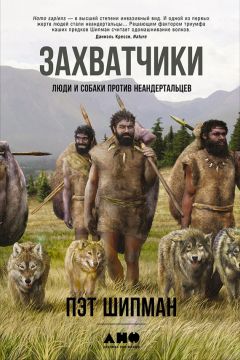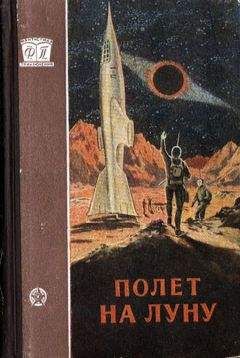69
Finlayson C. Neanderthals and Modern Humans. 153.
См. обсуждение в книге Trinkaus E., Shipman P. The Neanderthals/New York: Knopf. 1992.
C. Marean, из личных разговоров с автором, 25 января 2014 г.
Gause G. F. The Struggle for Existence/Baltimore: Williams & Wilkins. 1934.
Hardin G. The Competitive Exclusion Principle // Science. 131. 1960, 1292–1297.
Terborgh J., Holt R., Estes J. Trophic Cascades: What They Are, How They Work, and Why They Alter // Trophic Cascades: Predators, Prey, and the Changing Dynamics of Nature. Eds. J. Terborgh, J. Estes/Washington, DC: Island Press. 2010, 7.
См. Mac Arthur R., Wilson E. O. The Theory of Island Biogeography. 1967; Репринт Princeton, NJ: Princeton University Press, 2001.
Portmann A. A Zoologist Looks at Humankind/New York: Columbia University Press. 1990; Smith T., Tafforeau P., Reid D. et al. Dental Evidence for Ontogenetic Differences between Modern Humans and Neanderthals // Proceedings of the National Academy of Sciences USA. 107. 2010, 20923–20928.
Roemer G., Gompper M., Van Valkenburgh V. The Ecological Role of the Mammalian Mesocarnivore // Bioscience. 59. 2009, 165–173.
Grinnell J. The Origin and Distribution of the Chestnut-Backed Chickadee // The Auk (American Ornithologists' Union). 21. 1904, 364.
Van Valkenburgh B. Tracking Ecology over Geological Time: Evolution within Guilds of Vertebrates // Trends in Evolution and Ecology. 10. 1995, 71–76; Ripple W., Van Valkenburgh B. Linking Top-Down Forces to the Pleistocene Megafaunal Extinctions // Bioscience. 60. 2010, 516–526.
Patou-Mathis M. Neanderthal Subsistence Behaviours in Europe // International Journal of Osteoarchaeology. 10. 2000, 379–395; Grayson D., Delpech F. The Large Mammals of Roc de Combe (Lot, France): The Chatelperronian and Aurignacian // Journal of Anthropological Archaeology. 27. 2008, 338–362; Grayson D., Delpech F. Changing Diet Breadth in the Early Upper Paleolithic of Southwestern France // Journal of Archaeological Science. 25. 1998, 1119–1130; Grayson D., Delpech F. Specialized Early Upper Paleolithic Hunters in Southwestern France? // Journal of Archaeological Science. 29. 2002, 1439–1449; Grayson D., Delpech F. Ungulates and the Middle-to-Upper Paleolithic Transition at Grotte XVI (Dordogne, France) // Journal of Archaeological Science. 30. 2003, 633–640; Grayson D., Delpech F. Pleistocene Reindeer and Global Warming // Conservation Biology. 19. 2005, 557–562; Grayson D., Delpech F. Was There Increasing Dietary Specialization across the Middle-to-Upper Paleolithic Transition in France?/When Neanderthals and Modern Humans Met, ed. N. Conard. Tubingen: Kerns Verlag. 2006, 377–417; Grayson D., Delpech F., Rigaud J.-Ph. et al. Explaining the Development of Dietary Dominance by a Single Ungulate Taxon at Grotte XVI, Dordogne, France // Journal of Archaeological Science. 28. 2001, 115–125; Stiner M. Honor among Thieves: A Zooarchaeological Study of Neandertal Ecology. Princeton, NJ: Princeton University Press. 1994.
Stringer C., Finlayson J. C., Barton R. et al. Neanderthal Exploitation of Marine Mammals in Gibraltar // Proceedings of the National Academy of Sciences USA. 105. 2008, 14319–14324.
Bar-Yosef O. Eat What Is There: Hunting and Gathering in the World of Neanderthals and Their Neighbors // International Journal of Osteoarchaeology. 14. 2004, 333–342, doi: 10.1002/oa.765.
Richards M., Trinkaus E. Isotopic Evidence for the Diets of European Neanderthals and Early Modern Humans // Proceedings of the National Academy of Sciences USA. 106. 2009, 16034–16039.
Richards M., Pettitt P., Stiner M. et al. Stable Isotope Evidence for Increasing Dietary Breadth in the European Mid-Upper Paleolithic // Proceedings of the National Academy of Sciences USA. 98. 2001, 6528–6532, doi: 1073/Proceedings of the National Academy of Sciences USA. 111155298; Kuhn S., Stiner M. C. What's a Mother to Do? The Division of Labor among Neandertals and Modern Humans in Eurasia // Current Anthropology. 47. 2006, 953–980.
Bocherens H., Drucker D. Dietary Competition between Neanderthals and Modern Humans: Insights from Stable Isotopes/When Neanderthals and Modern Humans Met. Tubingen: Kerns Verlag. 2006, 129.
Bocherens H., Drucker D. Dietary Competition between Neanderthals and Modern Humans: Insights from Stable Isotopes/When Neanderthals and Modern Humans Met. Tubingen: Kerns Verlag. 2006, 136.
Bocherens H. Diet and Ecology of Neanderthals: Implications from C and N Isotopes/Neanderthal Life-ways, Subsistence and Technology: One Hundred Fifty Years of Neanderthal Study. New York: Springer. 2011, 73–85.
Fabre V., Condemi S., Degioanni A. et al. Neanderthals versus Modern Humans: Evidence for Resource Competition from Isotopic Modelling // International Journal of Evolutionary Biology. 2011. Article ID 689315, doi: 10.4061/2011/689315.
Salazar-Garcia D., Power R., Sanchis Serra A. et al. Neanderthal Diets in Central and Southeastern Mediterranean Iberia // Quaternary International. 318. 2013, 3–18; Salazar-Garcia D. Isotopos, dieta y movilidad en el Pais Valenciano: Aplicacion a restos humanos del Paleolitico medio alNeolitico final (Isotopes, Diet and Mobility in the Valencian Region; Application to Human Remains of the Middle Paleolithic and Final Neolithic) Ph. D. diss., Universitat de Valencia, 2012.
Stringer et al. Neanderthal Exploitation of Marine Mammals.
Shipman P. Separating 'Us' from 'Them': Neanderthal and Modern Human Behavior // Proceedings of the National Academy of Sciences USA. 105. 2008, 14241–14242.
Это наблюдение было сделано Кертисом Марином в личном разговоре со мной 27 января 2014 г.
Egelund C. Carcass Processing Intensity and Cutmark Creation: An Experimental Approach // Plains Anthropologist. 48. № 184. 2003, 39–51.
Kuhn, Stiner. What's a Mother to Do?
Higham et al. Timing and Spatio-Temporal Patterning.
Germonpre M., Udrescu M., Fiers E. Possible Evidence of Mammoth Hunting at the Neanderthal Site of Spy (Belgium) // Quaternary International. 2012. 337, 28–42.
Kay C. Are Ecosystems Structured from the Top-Down or from the Bottom-Up?/Wilderness and Political Ecology: Aboriginal Influences and the Original State of Nature. Salt Lake City: University of Utah Press. 2002, 215–237.
Wilczyriski J., Wojtal P., Sobczyk K. Spatial Organization of the Gravettian Mammoth Hunters' Site at Krakow Spadzista (Southern Poland) // Journal of Archaeological Science. 39. 2012, 3627–3642; Soffer O. The Upper Paleolithic of the Central Russian Plain. San Diego: Academic Press. 1985; Klein R. Ice-Age Hunters of the Ukraine. Chicago: University of Chicago Press. 1973.
Ripple W., Estes J., Beschta R. et al. Status and Ecological Effects of the World's Largest Carnivores // Science. 343. 2014, 152. doi: 10.1126/science.1241484.
Borer E., Halpern B., Seabloom E. Asymmetry in Community Regulation: Effects of Predators and Productivity // Ecology. 87..2006, 2813–2820.
Ripple et al. Status and Ecological Effects.
Fritz S., Stephensen R., Haynes R. et al. Wolves and Humans. Wolves – Their Behavior // Ecology, and Conservation. Eds. D. Mech and L. Boitani (Chicago: University of Chicago Press, 2003), 294.
Kay. Are Ecosystems Structured from the Top-Down?
Smith D., Peterson R., Houston D. Yellowstone after Wolves // Bioscience. 53. 2003, 330–340.
Laundre J. W., Hernandez L., Ripple W. J. The Landscape of Fear: Ecological Implications of Being Afraid // Open Ecology Journal. 3. 2010, 1–7.
D. Smith, E. Bang. Reintroduction of Wolves to Yellowstone National Park: History, Values and Ecosystem Restoration. Reintroduction of Top-Order Predators. Eds. M. Hayward, M. Somers (London: Blackwell, 2009), 92–124.
C. Wilmers, R. Crabtree, D. Smith et al., "Trophic Facilitation by Introduced Top Predators: Grey Wolf Subsidies to Scavengers in Yellowstone National Park "Journal of Animal Ecology 72 (2003): 909–916.
R. Crabtree and S. Sheldon, «The Ecological Role of Coyotes on Yellowstone's Northern Range,» in Carnivores in Ecosystems: The Yellowstone Experience, eds. T. W. Clark, A. P. Curlee, S. C. Minta, and P. M. Kareiva (New Haven, CT: Yale University Press, 1999), 127–163.
F. Palomares and T. Caro, «Interspecific Killing among Mammalian Carnivores,» American Naturalist 153 (1999): 492–508.
Crabtree and Sheldon, «Hie Ecological Role of Coyotes.»
D. Smith, R. Peterson, and D. Houston, «Yellowstone after Wolves.»
C. Wilmers, R. Crabtree, D. Smith et al., «Resource Dispersion and Consumer Dominance: Scavenging at Wolf– and Hunter-Killed Carcasses in Greater Yellowstone, USA,» Ecology Letters 6 (2003): 996–1003, doi: 10.1046/j.l461–0248.2003.00522.x; Wilmers et al., «Trophic Facilitation.»
P. Zarnetske, D. Skelly, and M. Urban, «Biotic Multipliers of Climate Change,» Science 336 (2012): 1516–1518.
Из личных разговоров автора с несколькими фермерами в долине Парадайз, 2 августа 2012 г.; D. Mech, «Wolf Restoration to the Adirondacks and Advantages and Disadvantages of Public Participation in the Decisions,» in Wolves and Human Communities: Biology, Politics, and Ethics, eds. V. Sharpe, B. Noron, and S. Donnelly (Washington, DC: Island Press, 2000), 13–22; V. Geist, «When Do Wolves Become Dangerous to Humans?» September 29, 2007, http://www.vargfakta.se/wp-content/uploads/2012/05/Geist-when-do-wolves-become-dangerous-to-humans-pt-l.pdf.
R. Wood, T. Higham, T. de Torres et al., «A New Date for the Neanderthals from El Sidron Cave (Asturias, Northern Spain),» Archaeometry 55 (2013): 148–158, doi: 10.1111/).1475–4754.2012.00671.x; T. de Torres, J. Ortiz, R. Grim et al., «Dating of the Hominid {Homo neanderthalensis) Remains Accumulation from El Sidron Cave (Borines, Asturias, North Spain): An Example of Multi-Methodological Approach to the Dating of Upper Pleistocene Sites,» Archaeometry 52 (2010): 680–705, doi: 10.1111/j/1475–4754.2009.00671.x.
J. Bermudez de Castro and P. Perez, «Enamel Hypoplasia in the Middle Pleistocene Hominids from Atapuerca (Spain),» American Journal of Physical Anthropology 96 (1995): 301–314; D. Guatelli-Steinberg, C. S. Larsen, and D. L. Hutchinson, «Prevalence and the Duration of Linear Enamel Hypoplasia: A Comparative Study of Neandertals and Inuit Foragers,» Journal of Human Evolution 47 (2004): 65–84.
A. Rosas, E. Martinez, J. Canaveras et al., «Paleobiology and Comparative Morphology of a Late Neanderthal Sample from El Sidron, Asturias, Spain,» Proceedings of the National Academy of Sciences USA 103 (2006): 19266–19271.
A. Defleur, O. Dutour, H. Valladas et al., «Cannibals among the Neanderthals?» Nature 362 (1993): 214.
A. Defleur, T. White, P. Valensi et al., «Neanderthal Cannibalism at Moula-Guercy, Ardeche, France,» Science 286 (1999): 128–131.
Bar-Yosef, «Eat What Is There,» 338.
P. Mellars and J. French, «Tenfold Population Increase in Western Europe at the Neandertal-to-Modern Human Transition,» Science 333 (2011): 623–627.
См., например, O. Bar-Yosef and J.-G. Bordes, «Who Were the Makers of the Chatelperronian Culture?» Journal of Human Evolution 59 (2010): 586–593; T. Higham, R. Jacobi, M. Julien et al., «Chronology of the Grotte du Renne (France) and Implications for the Context of Ornaments and Human Remains within the Chatelperronian,» Proceedings ofthe National Academy of Sciences USA 107 (2010): 20234–20239.
P. Shipman, не опубликовано. Убрав данные, основанные на шательперонских стоянках, я получила следующие оценки: количество стоянок: N = 26 мустьерских и 147 ориньякских. Пересчитанная плотность распределения орудий, шт/м2/1000 лет: для девяти мустьерских стоянок среднее значение составляет 6,6; для 12 ориньякских – 1,76. Тест Манна – Уитни показывает, что это отличие статистически значимо, значение параметра p < 0,002. Масса мяса: для мустьерских стоянок нет данных, поэтому невозможно провести статистическое сравнение с ориньякскими стоянками, для которых среднее значение (по 15 стоянкам) составляет 152,8 кг. Площадь стоянок: средняя площадь пяти мустьерских стоянок составляет 110 м2, тогда как средняя площадь 12 ориньякских стоянок равна 243,8 м2. Хотя ориньякские стоянки очевидно больше по размерам, чем мустьерские, статистическое сравнение лишено смысла из-за влияния многих факторов на площадь раскопок (финансирование, количество исследователей в группе, проводившей раскопки, географические факторы). За дополнительными разъяснениями по процедуре и сравнениями можно обратиться к статье Мелларс и Френч «Десятикратное увеличение популяции» (Mellars and French, «Tenfold Population Increase»).





